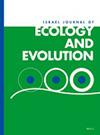Variations of the biodiversity and carbon functions of karst forests in two morphologically different sites in southwestern China
IF 0.8
4区 环境科学与生态学
Q3 ECOLOGY
引用次数: 2
Abstract
Knowledge of the biodiversity and carbon (C) functions of karst forests is scarce. This study comprehensively compared the species diversity and floristic characteristics, biomass and its allocation, leaf and soil C and nitrogen (N) concentrations, and photosynthetic capacity of dominant tree species between peak clump depression (PCD)-type and plateau surface (PS)-type karst forests on the basis of two large plots (i.e., 1 and 2 ha, respectively) in southwestern China. Results showed that PCD-type karst forest exhibits higher biodiversity and more tropical family and genus types than PS-type karst forest. These two types of karst forest presented similar total biomass, but PCD-type karst forest allocated more biomass to supporting roots and less biomass to absorbing roots. PS-type karst forest had higher C/N ratios in leaves and soils than PCD-type karst forest. Deciduous tree species in PS-type karst forest had low net photosynthetic rates, resulting in lower net photosynthetic rate in PS-type karst forest than in PCD-type karst forest. Species richness and C storage in the karst morphologies would be considerably enhanced if degraded vegetation in different types of karst area could be successfully restored to forests according to respective morphological and vegetation features. A comprehensive understanding of the biodiversity and C functions of karst vegetation is essential to biodiversity conservation, regional C storage estimation, vegetation management and restoration, and potential global change mitigation.西南两种形态不同立地喀斯特森林生物多样性及碳功能的变化
对喀斯特森林的生物多样性和碳(C)功能的认识很少。本文以2个大样地(分别为1 ha和2 ha)为研究对象,综合比较了西南地区峰丛洼地(PCD)型和高原地表(PS)型喀斯特森林的物种多样性和区系特征、生物量及其分配、叶片和土壤C、氮(N)浓度以及优势树种光合能力。结果表明,与ps型喀斯特森林相比,pcd型喀斯特森林具有更高的生物多样性和更多的热带科属类型。两种类型的喀斯特森林的总生物量相似,但pcd型喀斯特森林将更多的生物量分配给支持根,而较少的生物量分配给吸收根。ps型喀斯特林叶片和土壤碳氮比均高于pcd型喀斯特林。ps型喀斯特林的落叶树种净光合速率较低,导致ps型喀斯特林的净光合速率低于pcd型喀斯特林。不同类型喀斯特地区的退化植被如果能根据不同的形态和植被特征成功恢复为森林,喀斯特地貌的物种丰富度和碳储量将得到显著提高。全面了解喀斯特植被的生物多样性和碳功能对生物多样性保护、区域碳储量估算、植被管理和恢复以及潜在的全球变化减缓至关重要。
本文章由计算机程序翻译,如有差异,请以英文原文为准。
求助全文
约1分钟内获得全文
求助全文
来源期刊

Israel Journal of Ecology & Evolution
环境科学-进化生物学
CiteScore
2.10
自引率
0.00%
发文量
7
审稿时长
>36 weeks
期刊介绍:
The Israel Journal of Ecology and Evolution includes high-quality original research and review papers that advance our knowledge and understanding of the function, diversity, abundance, distribution, and evolution of organisms. We give equal consideration to all submissions regardless of geography.
 求助内容:
求助内容: 应助结果提醒方式:
应助结果提醒方式:


